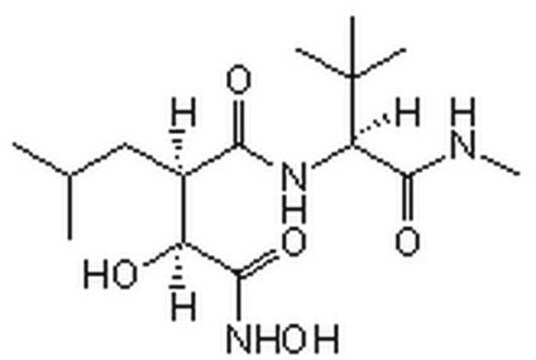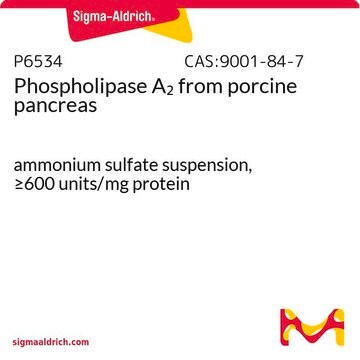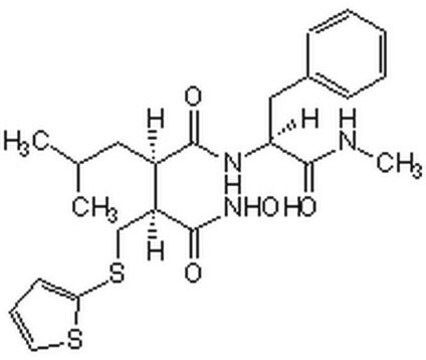SML1100
Varespladib
≥98% (HPLC)
Synonym(s):
2-[[3-(2-Amino-2-oxoacetyl)-2-ethyl-1-(phenylmethyl)-1H-indol-4-yl]oxy]-acetic acid, A-001, LY-315920, LY315920
About This Item
Recommended Products
Quality Level
Assay
≥98% (HPLC)
form
powder
color
white to beige
solubility
DMSO: 10 mg/mL, clear
storage temp.
−20°C
InChI
1S/C21H20N2O5.Na/c1-2-14-19(20(26)21(22)27)18-15(9-6-10-16(18)28-12-17(24)25)23(14)11-13-7-4-3-5-8-13;/h3-10H,2,11-12H2,1H3,(H2,22,27)(H,24,25);/q;+1/p-1
InChI key
XZZUHXILQXLTGV-UHFFFAOYSA-M
Application
- to test its effect on the human astrocytes subjected to psychosine-induced toxicity
- to test its neutralization functionality on the black snake species P. colletti venom
- in combination with snake venom metalloproteinases (SVMP)-inhibitor, marimastat to test its protective functionality on envenoming by vipers
Biochem/physiol Actions
Storage Class Code
11 - Combustible Solids
WGK
WGK 3
Flash Point(F)
Not applicable
Flash Point(C)
Not applicable
Certificates of Analysis (COA)
Search for Certificates of Analysis (COA) by entering the products Lot/Batch Number. Lot and Batch Numbers can be found on a product’s label following the words ‘Lot’ or ‘Batch’.
Already Own This Product?
Find documentation for the products that you have recently purchased in the Document Library.
Articles
Discover Bioactive Small Molecules for Lipid Signaling Research
Our team of scientists has experience in all areas of research including Life Science, Material Science, Chemical Synthesis, Chromatography, Analytical and many others.
Contact Technical Service








